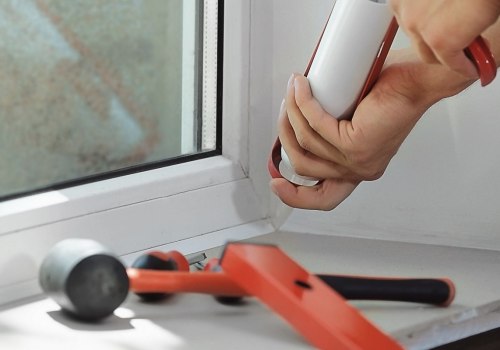Installing replacement windows and doors in high-humidity areas requires careful planning, proper material selection, and adherence to specific techniques that combat moisture-related challenges. High humidity can impact the structural integrity and performance of doors and windows, making it essential to approach the process with knowledge and precision. Whether you’re upgrading for energy efficiency, aesthetics, or functionality, understanding the nuances of installation in humid environments will ensure a successful and durable outcome.
Choosing the Right Materials
The choice of materials is critical when working in high-humidity areas, as moisture can accelerate wear and lead to warping, swelling, or mold growth. Vinyl and fiberglass are popular materials for windows and doors in such climates due to their resistance to moisture and minimal maintenance requirements. Aluminum frames with thermal breaks are also a durable choice, offering enhanced energy efficiency while resisting rust and corrosion. Wood, while attractive, requires proper sealing and regular maintenance to withstand humid conditions. Insulated glass units with low-emissivity (Low-E) coatings can further improve the performance of replacement windows by reducing condensation buildup and improving energy efficiency.
Preparing for Installation
Preparation is a key step in ensuring a smooth installation process. Begin by inspecting the openings where the replacement windows and doors will be installed. Remove any existing damage, such as rotten wood, cracks, or mold, as these issues can compromise the effectiveness of the installation. Clean and dry the area thoroughly to create a stable base for the new units. Properly measured and precisely cut openings help minimize gaps that could allow moisture infiltration.
Installing with Moisture Control in Mind
The installation process must focus on sealing and insulating against moisture. Apply high-quality flashing tape or membrane around the window or door openings to create a water-resistant barrier. This step is especially important in humid areas where rain and condensation are prevalent. Use caulking or sealants designed for wet conditions to fill gaps and ensure a tight fit. Proper insulation, such as expanding foam or weatherstripping, prevents air leaks and reduces the risk of condensation forming on interior surfaces. Additionally, pay attention to the alignment of the units to ensure they are level and plumb, which is crucial for long-term performance.
Ventilation and Drainage Considerations
High-humidity environments demand attention to ventilation and drainage systems. Replacement windows should include weep holes or drainage channels to allow water to escape and prevent it from accumulating inside the frame. For doors, thresholds with proper seals and drainage systems help keep moisture out. Ensuring adequate ventilation within the building can also mitigate humidity-related issues. Installing windows with vent locks or features that allow controlled airflow can reduce condensation and improve indoor air quality.
Addressing Energy Efficiency
Energy efficiency is an added benefit of upgrading windows and doors, especially in humid climates where maintaining indoor comfort can be challenging. Choose units with Energy Star ratings that are specifically designed for your climate zone. Double or triple-pane glass with insulating gas layers, such as argon or krypton, enhances thermal performance. Coatings like Low-E help reflect heat while keeping interiors cool, reducing the strain on HVAC systems in high-humidity areas.
Working with Professional Installers
Although DIY installations may seem cost-effective, hiring professionals experienced in working in humid climates is often the better option. Proper installation techniques ensure the windows and doors perform as intended and remain durable over time. Experts can assess the unique needs of your property and recommend solutions tailored to your specific environment. For instance, Focus Construction in Knoxville Tennessee has expertise in managing installations in high-humidity regions, offering services that combine precision and quality materials to meet the demands of challenging climates.
Maintenance Tips for Longevity
After installation, regular maintenance is essential to extend the life of your replacement windows and doors. Clean frames and glass periodically to prevent dirt and grime buildup, which can trap moisture. Inspect seals, caulking, and weatherstripping for signs of wear or damage, replacing them as needed to maintain a watertight barrier. Keep weep holes and drainage channels clear of debris to ensure proper water flow. Additionally, check for signs of mold, warping, or discoloration, addressing issues promptly to prevent further damage.
Maximizing Value and Comfort
Replacing windows and doors in high-humidity areas not only enhances the functionality and aesthetics of your home but also improves energy efficiency and indoor comfort. By carefully selecting materials, employing proper installation techniques, and prioritizing maintenance, you can ensure your investment withstands the challenges posed by moisture. Whether you’re upgrading a coastal home, a property near a lake, or a residence in a humid urban setting, following these guidelines will help you achieve lasting results and enjoy the benefits of a well-sealed, energy-efficient, and visually appealing home.






